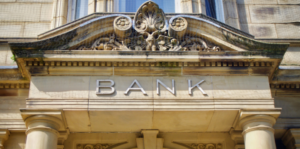Student loan debt is a national epidemic. Borrowers who graduated from college have $28,650 in student loan debt, on average.
With such a hefty loan balance and high monthly payments, you may be searching for some relief. While student loan forgiveness may sound like the perfect solution, you may not qualify. That’s especially true if you have private loans; private student loan forgiveness doesn’t exist.
Is private loan forgiveness an option?
Student loan forgiveness is a hot topic right now. There are a few different forgiveness programs available for federal student loans:
- Public Service Loan Forgiveness (PSLF): With PSLF, you must work for a government agency or non-profit organization for at least 10 years while making 120 qualifying payments toward your loans. After that time period, you can apply to have the remaining loan balance forgiven, tax-free.
- Income-driven repayment plan forgiveness: If you’re on an income-driven repayment plan and make 20 to 25 years of payments and still have a balance, the remaining balance will be discharged. However, the forgiven loan balance is taxable as income.
- Teacher Loan Forgiveness: If you’re a teacher working for a qualifying school for at least five consecutive years, you could have a portion of your loan balance forgiven.
Unfortunately, private student loans aren’t eligible for these kinds of loan forgiveness; only federal student loans qualify. In most cases, private student loans can only be discharged in the case of death or permanent disability, and those policies can vary from lender to lender.
5 alternatives to private student loan forgiveness
If you’re struggling with student loan debt and were hoping loan forgiveness would help, don’t give up hope. There are other strategies you can use to make your debt more manageable.
1. State repayment assistance programs
While private student loans aren’t eligible for loan forgiveness, you may be able to get some relief through state-based repayment assistance programs. Many states will offer you money to repay some or all of your student loans in return for a service commitment.
For example, physicians in Georgia can get up to $100,000 in student loan repayment assistance if they work in a rural area for at least four years.
States primarily offer these programs to teachers, healthcare professionals, and lawyers. To find out if your state has a similar program, visit your state’s department of education website.
2. Deferment or forbearance
If you’re planning on going back to school or are facing a financial hardship, such as a job loss or medical emergency, you may be able to get some short-term help in the form of deferments or forbearance. If you qualify, you can postpone making payments on your loan for a set time period, without becoming delinquent on your debt.
Many private student loan lenders offer deferments for borrowers who go back to school. And, some offer temporary forbearance if you’re in the middle of an emergency so you can get back on your feet. To find out if you qualify, contact your lender directly.
3. Ask for a lower monthly payment
If you can’t afford your payments, contact your lender right away. While private student loans don’t have benefits like access to income-driven repayment plans, some lenders may be willing to work with you. For example, some lenders will allow you to make interest-only payments or reduced payments for a few months. That perk can give you some time to improve your finances so you can better afford your payments.
4. Refinance your loans
If you want to tackle your debt, another option is to refinance your student loans. With refinancing, you work with a private lender to take out a loan for the amount of your current debt. The new loan has completely different terms, including interest rate, monthly payment, and repayment period.
If you have good credit and a stable income, you could qualify for a lower rate, helping you save a significant amount of money.
For example, let’s say you had $35,000 in student loans at 6.8% interest. On a 10-year repayment term, you’d have a monthly payment of $403, and you’d repay a total of $48,334.
But if you refinanced your debt and qualified for a loan with a 4.5% interest rate, your payment would drop to just $363. And, you’d repay just $43,528. Taking just a few minutes to complete and submit a student loan refinancing application would allow you to save nearly $5,000.
| Original Loan (6.8% Interest) | Refinanced Loan (4.5% Interest) | |
| Loan Amount | $35,000 | $35,000 |
| Loan Term | 10 years | 10 years |
| Monthly Payment | $403 | $363 |
| Total Paid | $48,334 | $43,528 |
| Total Interest Paid | $13,334 | $8,528 |
5. Declare bankruptcy
If you’ve exhausted all of your options and are in a truly disastrous financial situation, one other option is to declare bankruptcy. When you do so, your current debt is completely eliminated. That means you’re no longer obligated to make any payments, and creditors can no longer collect on the debt.
However, bankruptcy has some pretty serious consequences. It will wreck your credit, and will stay on your credit report for years.
You should also know that getting your student loans discharged in bankruptcy is harder than it is for other forms of debt. You’ll have to prove that repaying your loans would pose an undue hardship on you. That means you’d have to show the court that making your payments would prevent you from maintaining a minimal standard of living, your circumstances are unlikely to improve, and you’ve made good faith efforts to repay your loans in the past.
And, you’ll likely need to hire a bankruptcy attorney and pay filing costs, which can be quite expensive. Bankruptcy is a last resort you should only consider after you’ve tried other strategies.
Paying off your debt
If you have private loans, you may be discouraged to learn that private student loan forgiveness isn’t an option. However, there are other tools available to you to help make your debt more affordable. By using repayment assistance programs or student loan refinancing, you can pay off your debt once and for all.
Ready to refinance your loans? Use Purefy’s Find My Rate tool to compare offers from multiple lenders, ensuring you get the best rates.
















